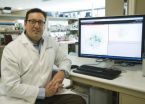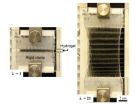(Press-News.org) Most professional English football teams don't comply with international guidelines on concussion among players, which ensure they are safe to return to play, indicates research published online in the British Journal of Sports Medicine.
The Consensus in Sport (CIS) guidelines were developed following the first international conference on concussion in sport in 2001.
This was convened by the International Ice Hockey Federation, FIFA (Federation Internationale de Football Association), and the International Olympic Committee Medical Commission in recognition of the inevitability of concussion in high speed and contact sports.
The guidelines were further developed at subsequent conferences in 2004 and 2008. They now standardise the definition of concussion, and broaden it to include being knocked to the ground and dazed.
They stipulate that all players must undergo cognitive assessment and be thoroughly tested for concussive symptoms before the season starts, with those deemed to be concussed gradually returned to play, and only when free of all symptoms.
After a high profile incident in 2007 during a cup final, the Football Association clarified its recommendations on concussion for club medical officers.
But there is no guidance on how to recognise the signs and symptoms of concussion or any requirement for club doctors to demonstrate any expertise in concussion management, the authors point out.
So they sent a questionnaire to all 92 clubs in the English Football League, which is divided up into four separate leagues—Premier League; Championship League ; and Leagues 1 and 2—at the start of the 2009/10 football season.
The response rate was 39%, with similar proportions of completed questionnaires returned by each of the leagues.
Around one in four (28%) clubs across all the leagues said that they had not heard of the CIS guidelines.
Fewer than half (44%) of the Premiership teams routinely carried out a cognitive assessment before the season got under way, although they completed significantly more of these than any of the other leagues. Similarly, only one in 10 teams carried out a concussion symptom score.
Following a concussion, over half the Premier League and Championship clubs used tests that measure both cognitive assessment and symptoms, as recommended.
But only half of the teams who were aware of the CIS guidelines did so. And few teams deployed the pre-season cognitive assessment in their evaluation.
The recommended stepwise return to play, with a review of symptoms every 24 hours, was not widely enforced.
Almost half (44%) of teams did not comply with CIS guidelines, which indicate that the earliest a player could return to play would be 6 days, and that no fixed rest period should be applied.
The length of rest periods varied from 3 to 28 days, the survey responses showed, with fixed rest periods applied by several teams in the lower leagues and one premier league club enforcing a two week rest period.
Relying on subjective assessments by the team doctor or the player to make return to play decisions could be unsafe, say the authors, who emphasise: "It is widely accepted that medical teams are under constant pressure to return players to fitness as soon as possible."
The responses indicated that clubs didn't take concussion sufficiently seriously to dedicate resource to it, yet it accounts for up to 11% of all footballing injuries, and including training, works out at one incident almost every month for a squad of 25 players, say the authors.
"It is in the interests of clubs and their players for the Football Association to endorse the CIS guidelines [which are] followed by the majority of world sporting organisations," they conclude.
INFORMATION: END
Tests to screen for "silent" neck artery narrowing in a bid to curb the risk of a stroke result in many unnecessary and costly surgical procedures, and ultimately save very few lives, concludes an editorial in the Journal of NeuroInterventional Surgery.
In 2-6% of European men aged 60 plus, the major arteries supplying the brain (carotid arteries) are narrowed by 50-99%. This condition, termed carotid stenosis or atherosclerosis, accounts for 10-15% of strokes (data not in paper).
Carotid atherosclerosis is commonest in those with mild peripheral arterial disease in ...
Cold Spring Harbor, N.Y. – Most people understand genes to be specific segments of DNA that determine traits or diseases that are inherited. Textbooks suggest that genes are copied ("transcribed") into RNA molecules, which are then used as templates for making protein – the highly diverse set of molecules that act as building blocks and engines of our cells. The truth, it now appears, is not so simple.
As part of a huge collaborative effort called ENCODE (Encyclopedia of DNA Elements), a research team led by Cold Spring Harbor Laboratory (CSHL) Professor Thomas Gingeras, ...
The locations of millions of DNA 'switches' that dictate how, when, and where in the body different genes turn on and off have been identified by a research team led by the University of Washington in Seattle. Genes make up only 2 percent of the human genome and were easy to spot, but the on/off switches controlling those genes were encrypted within the remaining 98 percent of the genome.
Without these switches, called regulatory DNA, genes are inert. Researchers around the world have been focused on identifying regulatory DNA to understand how the genome works. ...
Boston, MA – Each year, nearly 2 million people die from tuberculosis – a treatable disease that has been brought under control in the United States, but continues to ravage other parts of the world. This health inequity should prompt a complete rethinking of the way tuberculosis is fought on a global level, argue Salmaan Keshavjee, MD, PhD, and Paul Farmer, MD, PhD, from Brigham and Women's Hospital (BWH). Their argument appears in an essay published September 6 in the New England Journal of Medicine.
"The global approach to fighting tuberculosis has been lacking," ...
ENCODE, an international research project led by the National Human Genome Research Institute (NHGRI), has produced and analyzed 1649 data sets designed to annotate functional elements of the entire human genome. Data on transcription starting sites (TSS) contributed by a research team at the RIKEN Omics Science Center provided key anchor points linking the epigenetic status of genes observed at the 5' end directly to their RNA output.
The ENCODE (Encyclopedia of DNA Elements) project aims to delineate all functional elements encoded in the human genome. Thirty-two institutes ...
This press release is available in German.
Physicists at the University of Vienna and the Austrian Academy of Sciences have achieved quantum teleportation over a record distance of 143 km. The experiment is a major step towards satellite-based quantum communication. The results have now been published in "Nature" (Advance Online Publication/AOP).
An international team led by the Austrian physicist Anton Zeilinger has successfully transmitted quantum states between the two Canary Islands of La Palma and Tenerife, over a distance of 143 km. The previous record, set ...
Cambridge, Mass. - September 5, 2012 - A team of experts in mechanics, materials science, and tissue engineering at Harvard have created an extremely stretchy and tough gel that may pave the way to replacing damaged cartilage in human joints.
Called a hydrogel, because its main ingredient is water, the new material is a hybrid of two weak gels that combine to create something much stronger. Not only can this new gel stretch to 21 times its original length, but it is also exceptionally tough, self-healing, and biocompatible—a valuable collection of attributes that opens ...
Genome Research publishes online and in print today a special issue dedicated to The ENCODE (ENCyclopedia Of DNA Elements) Project, whose goal is to characterize all functional elements in the human genome. Since the completion of the pilot phase of the project in 2007, covering 1% of the genome, The ENCODE Consortium has fanned out across the genome to study function and regulation on an unprecedented scale. This special issue presents novel findings, methodologies, and resources from ENCODE that bring extensive insight to gene regulation and set the stage for future ...
(Boston) – Results of a study led by researchers at Boston University School of Medicine (BUSM) and the Veterans Affairs (VA) Boston Healthcare System indicate that the proposed changes to the diagnosis of post-traumatic stress disorder (PTSD) will not substantially affect the number of people who meet criteria for the disorder.
Mark W. Miller, PhD, associate professor at BUSM and a clinical research psychologist at the National Center for PTSD at VA Boston Healthcare System served as lead author of the study, which is published online in Psychological Trauma: Theory, ...
Windows to the past, stars can unveil the history of our universe, currently estimated to be 14 billion years old. The farther away the star, the older it is — and the oldest stars are the most difficult to detect. Current telescopes can only see galaxies about 700 million years old, and only when the galaxy is unusually large or as the result of a big event like a stellar explosion.
Now, an international team of scientists led by researchers at Tel Aviv University have developed a method for detecting galaxies of stars that formed when the universe was in its infancy, ...



